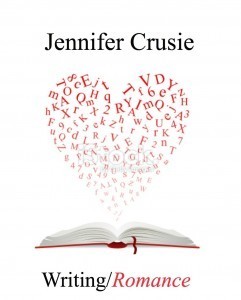Exploiting You: What Should Go Into A Writing Book
Note: This post has been updated with suggestions from the comments after the first day.
I’m finally getting that oft-talked about writing book together, and I’m working on a plan of organization now so I can take the ten tons of text that I already have, edit it and add to it and generally get this done. (That’s probably a good two years of work right there.) Below is the first draft of my proposal for the book. I emphasize: FIRST DRAFT. So what I need to know is what you would like in a writing book that isn’t specified below, along with whatever you don’t like about this plan. Critique please . . .
This is a writing craft book, not a creative writing book.
It should be accessible and informal, possibly oversized and spiral-bound.
Its presentation is based on the following concepts:
• People are at different stages in learning their craft, and the content should provide both beginning and advanced information.
• People learn in different ways: words, pictures, sounds, etc.
• People learn in small increments.
• People learn in patterns, not in a linear fashion
• People don’t read writing books from cover to cover, they look for the topics they need help with.
• People only absorb about 10% of what they read or hear (repetition is necessary).
Therefore, it’s important to present the information in easy-to-find sections that vary in length and depth and approach that repeat the key tools for good craft. So the plan is:
A. To divide the first part of the book into general writing craft topics: Conflict, Structure, Character, Setting, Unity.
1. The contract with the reader: voice, tone, promise, invitation
2. Conflict: protagonist, antagonist, goal (positive and negative goals), motivation, external conflict, conflict lock, crucible
3. Structure: linear, epic, frame, pattern, picaro, choose-your-own, contract with the reader
4. Linear structure: arc, pacing, escalation, turning points, stability, beginnings and endings, contract with the reader
5. Structure: subplots
6. Structure: scenes, beats, scene sequences
7. Character: protagonist, antagonist, ficelle, mentor, burden, barrier, minion
8. Character: establishment of (action, thought, dialogue, voice, other characters, authorial intrusion.)
9. Character: point of view, voice
10. Character: arc, internal conflict, vulnerability
11. Setting: time, place, community, context
12. Unity: authority in the text, endings and beginnings, subtext, motif, metaphor, theme
To divide each of those topics into sections:
1. The topic at a glance: 500 words that explains what the topic means
2. Diagrams or visuals that explain the topic
3. Definitions for the topic: the parts that make up conflict.
4. Longer, theoretical essays on each of the parts, discussing the topic in more detail and depth.
5. Exercises for each topic, ways to explore the topic using the reader’s WIP.
6. Essays that analyze a book, movie, or TV episode to illustrate the concepts.
7. A reading/watching list of good sources for more information on those topics.
8. Sidebars throughout with quotes from other writers, sections of books that illustrate the concept, Q&As from Argh and McD, etc.
9. A trouble-shooting section for problems most often encountered in those topics
B. To discuss how to draft in the second section, the process from idea to first draft, the idea that everybody finds her own path to Oz, the functions of different drafts, etc.
1. Idea to first draft; discovery
2. Drafting and discovery
3. Analyzing a complete first draft
4. Beta readers and critique groups
5. The finished manuscript
6. Example of scene (story?) through the draft process
C. To focus the second part of the book on writing romance, addressing each of the above topics in terms of the special problems of the romance genre.
1. Definition of the romance novel
2. Subgenres in romance fiction
3. Introducing the romance plot, cute meet, contract with the reader, vulnerability
4. Conflict in the romance plot
5. Writing love: the emotional arc
6. Writing love: the physical arc
7. Good romance tropes and bad (romcom run, Big Misunderstanding, Secret Baby, etc.)
8. Writing community: the social love story
D. To supplement the first two parts with additional materials that are related to the craft of writing:
1. An appendix on publishing.
The topics/parts should be coded with icons and edge-of-the-page/margin color:
Conflict – Red (bomb heart)
Structure – Yellow (gears heart)
Character – Pink (sunglasses hearts)
Setting – Green (tree heart)
Unity- Red-violet (button heart)
Those icons can then be used in sidebars to make connections between topics; for example, the impact of setting on point of view (in the e-book, these will be links). Other icons are a double heart for romance writing, a bandaid for troubleshooting, a cloud for discovery, and a shipping box with a heart for publishing.
The overall aim of the book is to make writing tools available to everyone in a way that’s welcoming and easy to understand, supplemented with essays that go deeper into the complexities of each tool for those who want more depth. We’re not trying to impress anybody: this is a craft book, not a creative writing tome. We’re talking about tools, not rules, and the underlying tone is that telling stories is something people do naturally, and this book is just to help those people tell those stories better.



